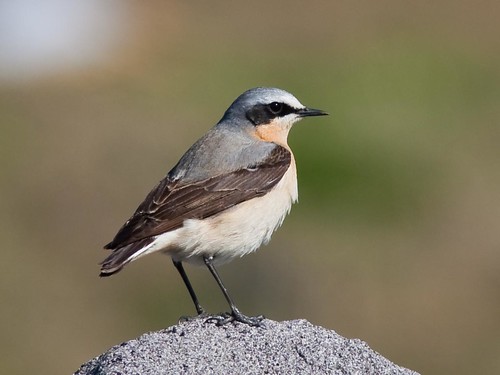I noticed someone had uploaded some photos of Lesser Spotted Woodpecker to Flickr which were taken in ‘Bushy Park, London’. It turns out to be the Royal deer park next to Hampton Court Palace, so I thought I’d check it out. I didn’t have much luck with the woodpeckers — some Great Spotted, loads of yaffling Green, but no Lesser Spotted.
But there were skylarks singing, a chiffchaff doing some half-hearted chiffing and chaffing, and my first proper summer bird of the year, Northern Wheatear, Oenanthe oenanthe:

Not my photo, btw; this picture is from Iceland (© Ómar Runólfsson and used under a CC by-nc-sa licence). I did try the iPhone and binoculars trick but I wasn’t really close enough. I don’t wish to boast, but my birds were even more attractive than that one; two absolutely pristine males looking gorgeous.
The reason I say ‘proper’ summer bird is that the stonechat from a few days ago is a bit of a borderline case: some European populations are migratory, but others, including most British stonechats, are not. The specific individual I saw was presumably migrating, because there’s no other way one would turn up in a garden in south London. Perhaps it was a Swedish bird heading back after spending the winter in Spain. But you can see stonechats here in winter.
The wheatear, though, is a proper summer visitor, passing through London on its way back from Africa. In fact they have one of the most remarkable migrations of all. It’s impressive that a small bird should migrate from Sub-Saharan Africa to England, but that’s just the start: some of them carry on not just to Iceland but across the Atlantic to Greenland and Eastern Canada. Meanwhile, they also breed in Northern Asia, all the way around to Alaska, and those birds also migrate to Africa for the winter, crossing the whole of Asia to do it.
And every schoolboy birdwatchers’ favourite fact about wheatears: the name comes from the Anglo Saxon hwit aers: that is, ‘white arse’. And they do indeed flash a big white rump when they fly.